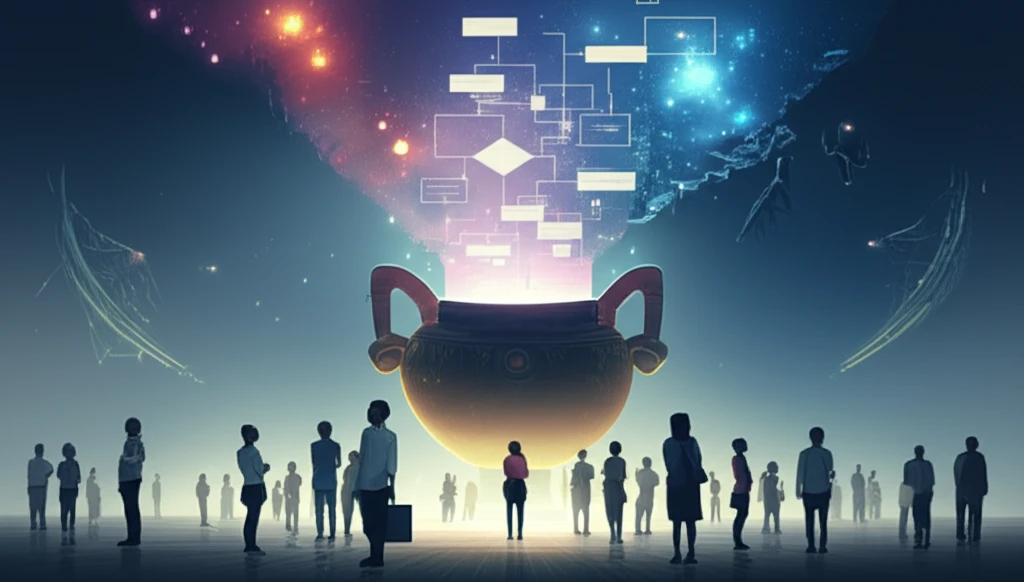
Collective Decisions, Simplified: How a Natural Adaptive Process Can Enhance Group Choices
"Tired of chaotic group decisions? Discover how a simple, nature-inspired algorithm can guide your team to better choices, faster."
Making decisions as a group can often feel like navigating a minefield. Whether it's a team at work, a family deciding on vacation plans, or even a community board, the challenge is always the same: how do you ensure everyone's voice is heard and that the final decision is one that everyone can get behind? Traditional voting systems and decision-making processes often fall short, leading to frustration and less-than-ideal outcomes. But what if there was a better way?
Imagine a process that's not only fair but also adapts naturally to the changing preferences of the group. A process that doesn't require complex calculations or a central authority, but instead relies on a simple, intuitive mechanism that everyone can understand. That's the promise of a new approach to collective decision-making, one that draws inspiration from the natural world and the principles of machine learning.
This innovative method uses an 'urn' filled with potential choices, where group members randomly select and adjust options based on their preferences. Over time, this process refines the collective choice, converging toward a solution that reflects the group's overall desires. It's a dynamic, flexible system that mirrors how natural processes adapt and evolve, offering a fresh perspective on how we can make better decisions together.
How Does This 'Urn Process' Actually Work?

The core of this decision-making process is surprisingly straightforward. Picture an urn filled with balls, each representing a different option for the group's decision. Here's how the process unfolds:
- Initial Setup: Start with an urn containing balls, each labeled with a possible decision. The initial distribution can be arbitrary.
- Random Selection: A random voter (or group member) draws two balls from the urn.
- Preference Revelation: The voter compares the two options and identifies their preferred choice.
- Relabeling: The ball representing the less-preferred option is relabeled to match the preferred option. Both balls are returned to the urn.
- Mutation (Optional): Occasionally, a randomly drawn ball is relabeled with a completely new, randomly selected option. This 'mutation rate' keeps the process flexible and prevents it from getting stuck on a single option too early.
- Repeat: The process repeats with different voters over multiple rounds.
The Future of Group Decisions: Embracing Natural Adaptation
This simple yet powerful urn process offers a promising path toward more effective and inclusive group decision-making. By drawing inspiration from natural adaptive systems, we can create processes that are not only fair and transparent but also resilient and responsive to the ever-changing needs and preferences of the group. Whether it's in the workplace, the community, or even in our personal lives, embracing these new approaches can lead to better outcomes and stronger, more cohesive teams.
